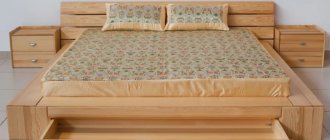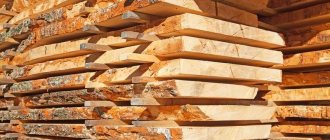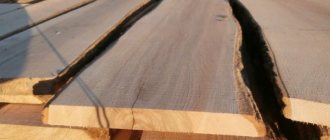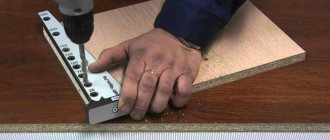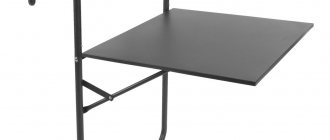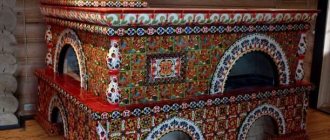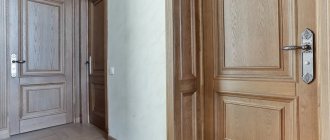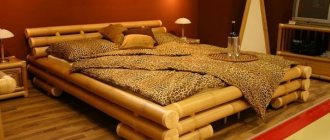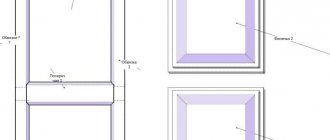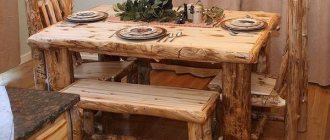Every person has the inherent desire to have his own business, and not to be an employee. After all, in this way, you can not only have a decent income, but also do what is closest to your liking.
When choosing a direction for developing your own business, you should pay attention to the production of furniture panels, as it is in great demand in the furniture industry, in the manufacture of decorative elements.
To open a small wood processing shop, you need to prepare the premises, find regular wholesale buyers, purchase quality materials, hire employees, and the like.
What is good about furniture board?
Furniture board has many advantages over other structural materials used for the manufacture of cabinet furniture:
- A high-quality furniture panel is not subject to deformation, unlike solid wood, which has strong internal stresses.
- The environmental friendliness of furniture panels (unlike, for example, chipboard, laminated chipboard) allows them to be widely used for the production of furniture for any purpose, including children's, bedrooms and for equipping bathrooms.
- Possibility of manufacturing furniture panels of almost any size at the request of the customer.
- Low cost compared to solid wood.
Over almost a century of history, the production of furniture panels has undergone few changes, except for the use of more advanced and high-tech equipment. It greatly simplifies and automates the manufacturing process.
Required Tools
Do-it-yourself furniture panel gluing is done using standard tools. Usually they are available to every man who prefers to do numerous housework on his own. Therefore, only the elements are prepared:
- planing machine that ensures optimal preparation of wood;
- a tool for joining and gluing individual wooden blocks;
- belt type sander;
- construction level, allowing you to get really even panels;
- coarse sandpaper;
- flat sander.
These tools will be enough to make a shield, so no expensive devices will be needed anymore.
The first stage of furniture panel production
The production of furniture panels begins with drying of edged boards. Drying is carried out to relieve internal stress and dry the boards to the required moisture content.
If you bypass this process and make furniture from damp wood, it will dry out over time, and the furniture panel may even crack at the edges of the lamellas. If lumber is dried excessively, furniture made from it may subsequently swell. Therefore, it is very important to bring the moisture content of lumber to the required values.
Drying is carried out in wood drying chambers. The loading volume of conventional lumber can vary from a “modest” value of 5 cubic meters to values of more than 200 cubic meters, simultaneously loaded into large drying chambers.
There are two main types of drying chambers: convective and dielectric. The difference between them is that in convective chambers, heat is supplied to the dried lumber and moisture is removed from it using air (a mixture of air and steam), while in dielectric chambers the lumber itself is heated directly by converting high or ultra-high frequency currents into thermal energy .
Dielectric chambers are less common due to their high cost, increased energy consumption, and uneven drying of lumber, but their advantage lies in the high drying speed.
Both types of drying chambers described can be equipped with vacuum systems. Equipping drying chambers with vacuum units can significantly reduce energy costs, since the release of moisture under vacuum occurs much faster.
Element gluing technology
After all the bars have been prepared, you can begin gluing them directly, which will ensure a high-quality shield. This procedure is also divided into successive stages:
- a device is selected that makes it possible to glue the bars together, and it must be even, and usually a regular sheet of chipboard is used for this;
- strips are fixed along the edges of the sheet, and their height depends on the parameters of the prepared bars;
- bars are laid between these slats, and they should fit tightly to each other and an attractive pattern should be formed from them;
- if there are cracks, they can be easily eliminated with a standard jointer;
- then the bars are glued together, for which different types of glue intended for wood are used, but the use of PVA glue is considered optimal;
- the entire surface consisting of bars is completely spread with glue, and it is important that the product is evenly distributed over the surface;
- the lubricated elements are pressed tightly against each other;
- two more such planks are laid on the slats, fixed to the chipboard sheet, after which these elements are connected with self-tapping screws, and this is necessary to prevent the resulting shield from bending;
- the resulting blank is left for about an hour, after which the shield is released and left for a day.
Thus, having figured out how to glue elements to obtain a furniture panel, this process will not require significant effort. The procedure is easily carried out on your own, and the result is structures that are effectively used to create numerous furniture, doors or even full-fledged coatings, characterized not only by high strength, but also reliability, as well as an attractive appearance.
Fastening the slats
Lay out the bars
We lay two more planks
Leave to dry
The second stage of furniture panel production
At the next stage, the edged boards are calibrated and cut into blanks and lamellas. All these operations are carried out on double-sided or four-sided machines, in which the lumber is planed and cut into lamellas of a given width using circular saws and/or cutter heads. When using cutter heads, it is possible to profile the surface of the lamellas.
Areas of use
Furniture oak panels, having all the advantages of natural wood, are free from its inherent disadvantages. Correctly selected material will optimally fit into both classic and modern interior design solutions. Oak canvas is used:
- in the production of furniture - cabinets, walls, cabinets, bedrooms, beds, kitchen sets, children's;
- stairs, doors, window sills, railings, which are subject to increased loads and must withstand changes in temperature and humidity;
- for interior decoration of premises - verandas, cafes, hotels;
- in the manufacture of exterior items - benches, benches, gazebos;
- for the production of decorative elements - shelves, frames, carvings.
Reasons for the popularity of roller shutters for wardrobes, their types
Closet
Bed
Tabletop
Ladder
Windowsill
Interior decoration
Table with benches
Shelf
The third stage of furniture panel production
Next, the defective areas are opened and cut out, as well as the lamellas are trimmed to the required length. For these purposes, machines called optimization lines are used. The workpieces shortened when cutting out defective areas are subsequently used for end splicing. For end splicing, large industrial enterprises use automatic splicing lines. In them, jagged tenons are cut at the ends of the workpieces, glue is applied to the tenons, and the workpieces are joined into a lamella.
Before being assembled into a shield, the lamellas undergo final calibration in order to remove residual adhesives from the ends, accurately adjust the geometric dimensions and thoroughly clean the surface.
Glue is applied to the lamellas assembled into the shield on both sides using double-sided glue-applying machines. After this, the lamellas assembled into a shield with glue applied to the side ends are glued together in fan or pneumatic clamps, or in special presses.
Final processing
Shields are made in such a way that they are not only strong and durable, but also quite attractive. To do this, attention is paid to some finishing stages, which include special processing. To do this, follow these steps:
- a preliminary grinding procedure is carried out. For these purposes, it is recommended to use a standard belt sander. It is necessary to insert special sandpaper into it, and it must have large fractions, since the initial processing is being done. It allows you to eliminate large defects and differences remaining on the surface after the process of creating the shield. You must act carefully, and also carry out the process in consistent and even lines;
- secondary processing - involves the use of a flat grinder. It ensures the removal of the slightest differences, irregularities and other defects present on the surface of the wooden furniture panel. Also, due to this process, lint is removed from the surface. It is recommended to pre-moisten the base with a small amount of water, and start sanding only after the structure has completely dried.
After competently implemented processing, it is possible to use the resulting panels to create a variety of tables or shelves, bedside tables and other furniture. They can be used to form doors or coatings that have high strength, reliability and durability.
The final stage of manufacturing furniture panels
After curing the glued furniture boards for a set time, the final stages are carried out - formatting the boards to standard sizes (length, width), as well as grinding and calibrating the boards.
Formatting of boards is carried out using format-cutting machines. For grinding and calibration, grinding and calibrating machines are used, usually equipped with several units: for rough, delicate and finishing grinding of the surface of furniture panels.
The result is furniture panels, from which you can make various cabinet furniture - tables, cabinets, cabinets, etc. - of a very original design. Furniture panels are made from pine, oak, ash, larch and other types of wood.
Selection and preparation of materials
Furniture panels are made from high quality edged or unedged boards. For this purpose, coniferous trees (spruce, pine), as well as hardwood trees (ash, oak, birch, beech) are used.
Furniture board is an excellent alternative to natural solid wood, but costs much less. For its production, different types of boards are used (solid, jointed), which makes it possible to produce products in different price segments.
To make a high-quality glued board you need:
- choose wisely where to harvest lumber;
- use a high-quality sawmill, since cutting the board is an important stage of processing;
- use modern steam dryers;
- Store wood in a well-ventilated, dry area with low humidity.
